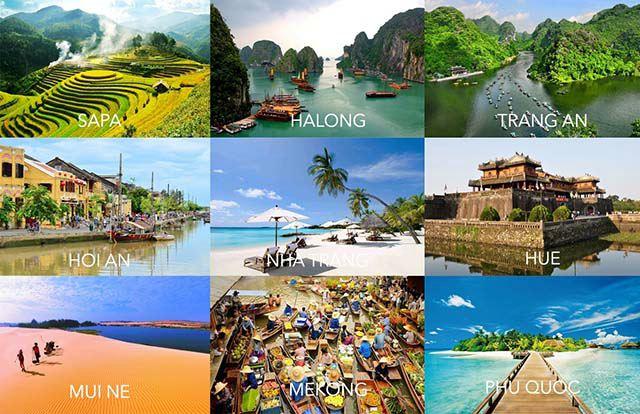HSBC: Outlook for int’l tourism in Viet Nam remains positive
VGP - With government ambitions and various development projects in play, the structural outlook for international tourism in Viet Nam remains positive, according to the “Viet Nam at a glance” report released by HSBC.

There are good reasons to expect a more meaningful recovery, in particular after China's reopening. In HSBC view, a 50-80 percent return of Chinese tourists could be achievable.
To realise Viet Nam's tourism potential and increase its attractiveness, tackling flight constraints with major markets and easing visa requirements are two of the key issues. In addition, Viet Nam has also made efforts to expand accommodation facilities, as well as diversify its tourism products, to further boost tourist inflows.
Time to visit Viet Nam
The report noted that following Viet Nam's re-opening last March, its domestic tourism has been roaring, with Viet Nam easily surpassing its 2022 target of 60 million and recording over 100 million tourists. Meanwhile, Viet Nam welcomed 3.6 million international tourists in 2022, mainly driven by travellers from South Korea (26 percent) and the U.S. (9 percent).
For 2023, the government is targeting 102 million domestic tourists and 8 million international visitors, with tourism receipts expected to rise more than 30 percent.
The good news is that mainland China, the largest visitor base for Viet Nam prior to the pandemic, has also recently begun its re-opening process, adding further tailwinds to Viet Nam's burgeoning tourism sector.
Given the proportion of Chinese tourists (30 percent share), Viet Nam will likely be another main regional beneficiary, just after Thailand, to receive a boost from the return of Chinese tourists.
Possible boosts for Viet Nam's tourism sector
The HSBC stated that expansion into new markets will be an area of focus, with various initiatives such as tourism roadshows being conducted to make headway into emerging markets like India, a country with a rising presence in Viet Nam's international tourism.
Just last September, VietJet commenced operating flight routes between Viet Nam's resort island Phu Quoc and India's New Delhi and Mumbai. Other routes have also been launched connecting the two countries' major cities.
Indeed, easier travel has also planted the seeds to deeper tourism connections: Indian tourists accounted for 4 percent of Viet Nam's total tourists in 2022, from just 1 percent in 2019.
Another way to facilitate tourism is not just by improving its traditional infrastructure, but also diversifying tourism products, recommened the HSBC.
Sports tourism, a subset of tourism included in the tourism industry vision from the Viet Nam National Administration of Tourism (VNAT), could also help attract high-spending travellers.
General tourism facility developments are also encouraging. In particular, the supply of high-end accommodation continues to grow, with the number of 4-5 star accommodations rising 12 percent per annum on average pre-pandemic, according to VNAT.
Post-pandemic, a number of global chains have been looking to actively expand their portfolios in Viet Nam, reflecting the country's attractiveness in areas beyond manufacturing./.

